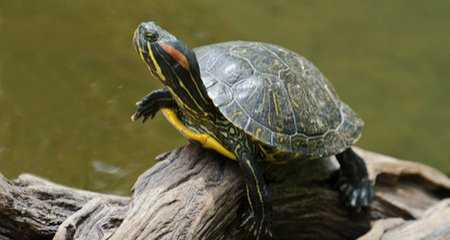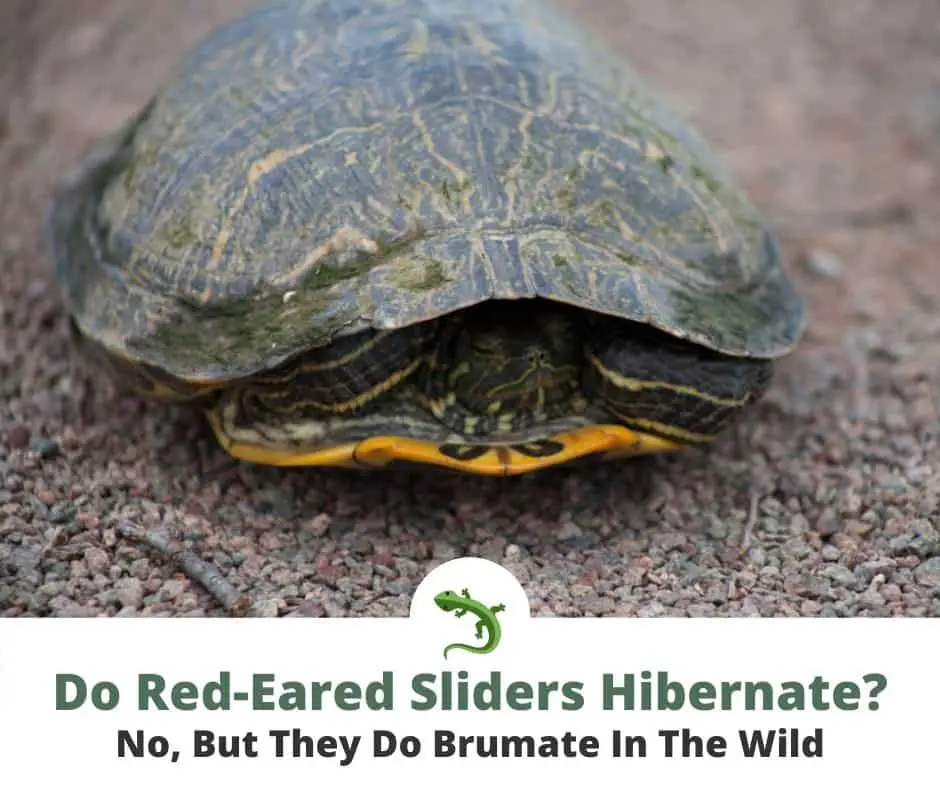
The red-eared sliders are a popular species of turtles commonly found in North America. Known for their distinctive red marking near their ears, these turtles are fascinating creatures that capture the interest of many reptile enthusiasts. One of the most intriguing aspects of the red-eared sliders’ lives is their hibernation behavior.
Hibernation is a natural process for these turtles, as well as for many other reptiles. During the colder months, red-eared sliders enter a state of dormancy to conserve energy and survive the harsh weather conditions. They typically find a secure place, such as burrows in the mud, to spend their winter months in a state of hibernation.
Preparation

Prior to hibernation, Red Eared Sliders go through a period called pre-hibernation. During this phase, their appetite decreases, and they start to bask less frequently. It’s essential to provide a proper setup that mimics their natural habitat to ensure a successful hibernation.
The enclosure should have a dry space on land where the turtles can safely retreat during hibernation. A substrate of soil or sand can be used for them to burrow in. Additionally, providing a shallow pool of water is necessary for hydration during this time.
Hibernation Duration
While in hibernation, the turtles’ heart rate and breathing slow down, and they become less responsive. This is a natural part of their hibernation process, and it’s essential not to disturb them during this time.
Post-Hibernation Care
Factors that Affect Hibernation in Red Eared Sliders
There are several factors that can affect the hibernation patterns of red-eared sliders:
1. Temperature
Temperature plays a crucial role in the hibernation process of red-eared sliders. These turtles are ectothermic, which means that their body temperature is regulated by the temperature of their environment. When the water temperature drops below a certain threshold, usually around 50 to 55 degrees Fahrenheit, red-eared sliders begin to prepare for hibernation.
2. Photoperiod
3. Feeding
4. Health and Body Condition
Tips for Red Eared Sliders’ Hibernation
1. Choose the right location: Find a suitable location for your red-eared sliders’ hibernation. This can be a cellar, a basement, or a cool room where the temperature can be maintained between 4 and 10 degrees Celsius.
2. Create a suitable hibernation environment: Make sure the hibernation environment is safe and secure. Use a container or a hibernation box that is big enough for your red-eared sliders to comfortably sit in. Fill it with damp soil, peat moss, or a mixture of sand and soil to allow your turtles to bury themselves.
3. Provide proper hydration: Before your red-eared sliders go into hibernation, make sure they are well-hydrated. Soak them in warm water for 20-30 minutes to ensure they are properly hydrated.
4. Gradually reduce temperature and light: Start lowering the temperature and reducing the amount of light your red-eared sliders receive a few weeks prior to hibernation. This will help them adjust to the changing conditions and prepare for hibernation.
5. Monitor their weight: Regularly weigh your red-eared sliders throughout the hibernation period to ensure they are not losing too much weight. If they are losing weight rapidly, consult a veterinarian for guidance.
6. Keep an eye on them: Check on your red-eared sliders regularly during hibernation to ensure they are healthy and not showing any signs of distress or illness. If you notice any abnormalities, seek veterinary assistance immediately.
7. Gradually bring them out of hibernation: As spring approaches, gradually increase the temperature and light exposure for your red-eared sliders. This will signal to them that it’s time to wake up from hibernation.
By following these tips, you can ensure that your red-eared sliders have a safe and successful hibernation period, allowing them to thrive and stay healthy.

I’m Lena Adams—a product of an unconventional upbringing in the African wilderness. My father, a daring explorer of African wildlife, sparked my fascination with reptiles, a passion that intertwined with the tragic loss of my mother during an expedition, leaving an indelible mark on my life. Driven to understand the creatures that captivated my parents, I embarked on my journey, sharing insights about reptiles, frogs, and lizards on my website. Through my explorations and conservation efforts, I honour my family’s legacy while seeking connections—to the creatures, nature, and the mother whose presence I yearn to understand.
